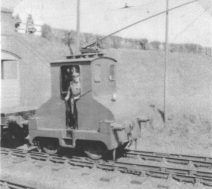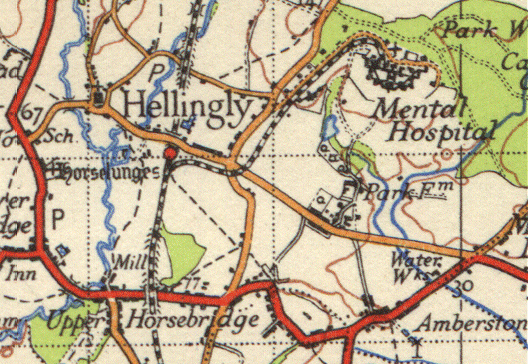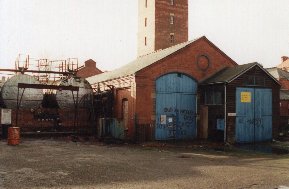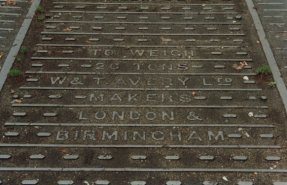

The Hellingly line dates from the last decade of the 19th Century when a contractors line was built to move materials from the station to the site where the new asylum was being constructed.
Nowadays we'd never consider building a temporary railway in this way but then these lines were the norm. Most lasted but a few months and were removed when the project was complete. In this case though, the visiting committee decided to retain the track and electrify it. Ostensibly this was to bring coal up from the station to the hospitals own generating station but I can't help feeling that the Victorian desire to show off with high technology was involved as well - the Manx Electric Railway was being built as a showpiece at the same time.
I won't pretend to supply a comprehensive history but can refer to you the publications on the bookshelf where more details can be found.
 The route of the line can clearly be seen from this old map
as it leaves the station, crosses the local roads and then curves into the main hospital complex.
The route of the line can clearly be seen from this old map
as it leaves the station, crosses the local roads and then curves into the main hospital complex.
At Park Farm there was a goods shed for the transfer of fruit and vegetables. The site was pretty much self-sufficient for food. There was a pig farm on site which the patients would work at as part of their therapy.

In this photo, taken by JR Batts, you can see the locomotive emerging from the side of the engine shed.
Most of the photos of the line were taken by people on rail tours in the 1950's. Sadly they all seemed to line up like good railway enthusiasts and shoot the same photograph. Fortunately some new views have appeared, mostly while I've been taking the layout to exhibitions.

The shed survived into the 21st Century. This picture by Barrie Collins from the 1990's shows it in use as a garage.
In the background is the water tower which was such a prominent feature on the local skyline for many years.
Sadly, a few years ago a fire destroyed the shed and it was demolished. A kind visitor to a show brought me a couple of bits of brickwork from the pile and these now travel with the model.

The hospital authorities obviously thought that the coal merchants would try and sell them short as they had a weighbridge installed. The lines show the position of the rails. The cast iron platform now sits in the car park.
Unfortunately I have been unable to find any picture or descriptions of the hut that would have gone with this and since it is in the middle of the model this is a nuisance !
Other useful links showing the hospital as it decays:
- Abandoned Britain - Hellingly Hospital
- Facebook - Hellingly Hospital fans
- Opacy - Hellingly Asylum
- Urban Exploration - Hellingly Hospital (East Sussex Mental Asylum)
- Derelicte - Hellingly Hospital
- East Sussex County Asylum
- The Richard Vobes Radio Show - Hellingly Hospital Video
- Disused stations - Hospital track bed
- Some nice photos and details of Hellingly Station
- Wikipedia entry